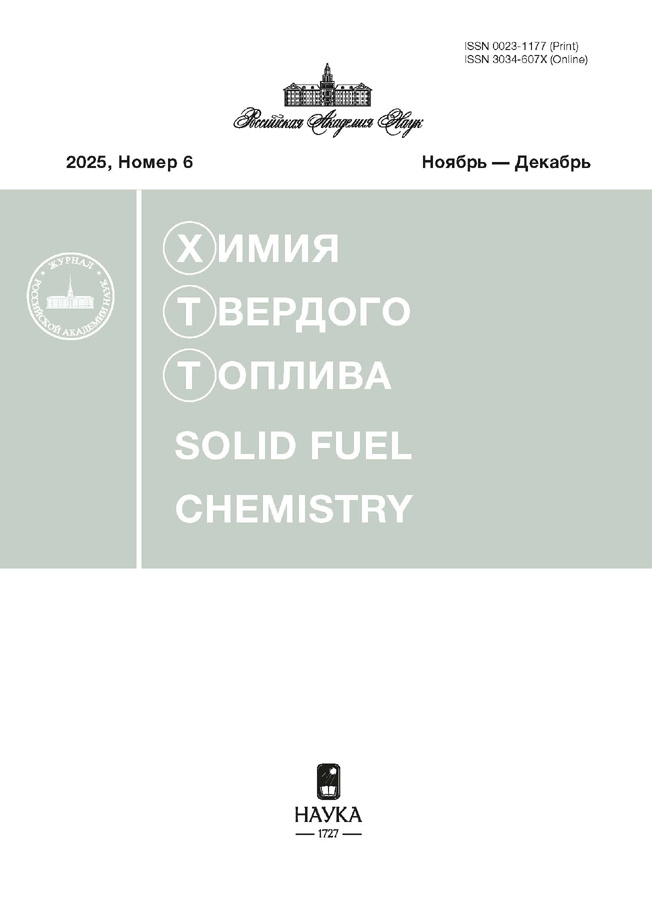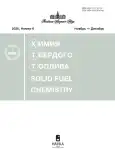Solid Fuel Chemistry
ISSN(Print): 0023-1177
Media registration certificate: No. 0110273 dated 02/09/1993
Founder: Institute of Organic Chemistry named after. N.D. Zelinsky RAS, Russian Academy of Sciences
Editor-in-Chief: Lapidus Albert Lvovich
Number of issues per year: 6
Indexation: RISC, list of Higher Attestation Commissions, CrossRef, White List (level 2)
Current Issue
No 6 (2025)
Articles
Synthesis of Nitrogen-Doped Carbon Materials
Abstract
The review devoted by nitrogen-doped carbon materials and strategies for their synthesis, which result in the formation of substances enriched with different forms of nitrogen — pyridine, pyrrole, quaternary (graphene-like), nitrile, amine and oxidized nitrogen. It has been shown that the predominant presence of a certain form of nitrogen in the composition of N-carbon material contributes to the manifestation of various properties that are important from a practical point of view — electrophysical, adsorption, etc. The importance of targeted regulation of the nitrogen state in N-carbon materials is also noted. Based on the analysis of approaches to N-functionalization of carbon materials considered in the literature, a fundamental scheme for obtaining materials with a predominant presence of a target form of nitrogen is proposed.
 3-24
3-24


Pyrolysis of Methane on Ni-La-Cu-Al2O3 and Ni-Fe-Cu-Al2O3 Catalysts
Abstract
Two methane pyrolysis catalysts, 80%Ni-5%La3O3-5%Cu-10%Al2O3 and 70%Ni-10%Fe-10%Cu-10%Al2O3, obtained by the solution combustion method (SCM) using urotropine as the fuel component, were studied. The textural characteristics, activity, and stability of the catalysts under various reaction conditions were studied, and a comparative analysis of their activity with known catalysts obtained by a similar method was conducted. The influence of catalyst composition on the efficiency and stability of the catalysts during methane pyrolysis was revealed.
 25-31
25-31


Mechanochemical Activation of Lignite-Coal Ash from Thermal Power Plants as a Method for Increasing the Extraction of Rare Earth and Dispersed Elements
Abstract
Rare earth (REE) and rare elements (RE) are important materials for high-tech industries. To date, coal and coal ash have been recognized as a promising, economically profitable alternative source of rare earth elements, however, the implementation of their extraction process requires the development of new approaches to concentration and leaching. In this work, waste from large lignite-coal thermal power plants in Novosibirsk was studied as sources of rare earth and rare elements. The morphology and phase composition of the samples were analyzed, as well as elemental analysis by inductively coupled plasma mass spectrometry (ICP-MS). It was found that the studied samples are characterized by an increased gallium content. The effect of preliminary mechanochemical activation (MCA) of ash on the degree of extraction of target elements has been studied. MCA was performed in the presence of various complexing reagents (еtidronic acid, carbamide, EDTA, humic acids and their salts). The composition of the aqueous extracts from the treated samples was analyzed in detail. It has been shown that the highest degree of gallium extraction is achieved when using sodium humate as a complexing agent.
 32-38
32-38


Structural Features of Humic Acids Isolated from Oxidized Kuzbass Coal and Yakutia Brown Coal
Abstract
The article presents the results of a study of the structure of humic acids isolated from brown coals of Yakutia and oxidized coals of Kuzbass using nuclear magnetic resonance spectroscopy and IR spectroscopy. Based on the 13C NMR spectra, their structural parameters, such as the aromaticity index and hydrophobicity index, were calculated. It was noted that the humic acids of oxidized coals were characterized by higher values of the aromaticity and hydrophobicity indices than those of the humic acids of brown coals. The results of titrimetric analysis showed that humic acids isolated from oxidized coals were characterized by a higher concentration of carboxyl and carbonyl groups. Based on the study, it was suggested that the humic acids of brown coals from Yakutia will have stronger growth-stimulating properties than the humic acids of oxidized coals from Kuzbass.
 39-48
39-48












